Significance
Sanxia Zushi Temple is a major center for Taiwan’s Qingshui Zushi folk religion. Its style differs from most other traditional temple architecture because its reconstruction was led by Li Mei-shu, a Taiwanese artist famous for his western paintings. As a professional artist, Li began the project that produced the breathtaking decoration of Sanxia Zushi Temple, which has earned the temple a reputation as a Hall of Eastern Art. The wood and stone carvings in the temple were crafted by renowned artisans in Taiwan based on the sketches of Li and other artists. The carvings incorporate delicate patterns and complex designs which are highly valuable in terms of ornament and art. The three pairs of layered-openwork carved columns are considered the treasures of the temple.
History
Sanxia Zushi Temple is dedicated to the worship of Qingshui Zushi, a monk of the Northern Song Dynasty (960 – 1279) from Anxi County in Fujian Province’s Quanzhou Prefecture. Qingshui Zushi pursued monasticism at the Qingshui Temple in Anxi, where he later gained his title. After immigrants from Anxi settled in Sanxia (now a district of New Taipei City) in 1749, they started construction of the temple and named it Changfuyan to worship Qingshui Zushi in 1769. Upon its completion, worshippers divided themselves into groups according to surname and alternated managing the temple and Qingshui Zushi’s Birthday Festival. The temple has undergone a total of three reconstructions. After World War II, its ownership was reassigned to Sanxia Township and it was placed under the charge of art master Li Mei-shu (1902 – 1983), the neighborhood warden in the Sanxia Street area at the time, who began the third reconstruction of the temple. As work progressed, he encouraged masters of temple architecture to participate and brought students from sculpting programs on board to complete the cast bronze and other works of the temple together. The temple’s ornate elegance is the hard-earned result of the reconstruction work that Master Li dedicated decades of his life to.
Special Features

1Treasure of the Temple—the Openwork Carved Columns


Sanxia Zushi Temple stands out in terms of the decorative arts partly due to its stone sculpture work. Sculptors are generally focused on the visible shape of their work; Li Mei-shu pursued underlying elegance in his. The 130 columns to date (the numbers are still increasing), sculpted from andesite and granite, compose three categories: dragon columns, flower-and-bird columns, and calligraphy columns. Each pair of dragon columns consists of one with a dragon facing upward and another with a dragon facing downward. This style of pairing is known as the fantian fudi (reverse) style. The calligraphy columns are inscribed with the work of several Chinese calligraphy masters, including Yu Youren (1879 – 1964), Yan Xishan (1883 – 1960), Chia Ching-teh (1880 – 1960), and Kao Pai-shih (1901 – 1969). Dragon columns guard the front of each hall, as they are symbolically seen as the protectors of the deities. Calligraphy columns stand at every door, while flower-and-bird columns are distributed throughout the temple. The three pairs of intricately, exquisitely carved columns which grace the front of the main hall are considered to be the treasures of the temple. They are:
The Layered-Openwork Octagonal Dragon Columns Inspired by The Warring Period of Swords
The two dragon columns closest to the main hall were sculpted into three layers of openwork carving with an octagon at the center of each column. They were inspired by The Warring Period of Swords, a popular novel published in the Qing Dynasty, illustrating the story in which Pai Yuan stole the magical Dragon Whisker Fan to help General Sun win a war. A carved dragon wraps around each column; one spirals upwards and the other downwards, and deities are carved among the clouds and onto the dragons. Each carved character is vivid and distinctive. The superb traditional stone carving techniques exhibited in these columns makes them unquestionable masterpieces of the sculptor’s art.
The Columns Featuring a Hundred Birds Resting on a Plum Blossom Tree
A pair of columns in front of the Zushi Temple clearly demonstrate Li Mei-shu’s love of birds. In order to complete this pair, the sculptors went through books of local and foreign bird illustrations and carved fifty birds on each column, for a total of 100 birds. The portrayal of these birds alight on the core of the column, depicted as a plum blossom tree, symbolizes imperial China as a major power in its region. At one point, representatives from the NGO BirdLife International visited the temple and were astonished at the number and variety of bird sculptures on the columns, nicknaming it the bird temple.
The Three-Layered Openwork Octagonal Dragon Columns Inspired by Investiture of the Gods
The third pair of columns is inspired by yet another Chinese novel, the Investiture of the Gods. The sculptors completed them according to a design created by Master Li. Most of the characters are in groups of four, among them the Four Fairies (Xiangu) and the Four Marshals (Yuanshuai). The openwork carvings extend to three or even four layers at times. The intense, lifelike expressions on the faces of the soldier characters give them a heroic demeanor.
2The Spiral Caisson Ceiling in the Main Hall While caisson ceilings only exist in the main hall and Sanchuan hall in a typical temple, Master Li decided to have them installed in every hall in Sanxia Zushi Temple and made a point of creating different designs for them all. The spiral caisson ceiling above the main hall is a particular standout thanks to its unique design. The spiral symbolizes incense endlessly curling upwards, while the design of a circle within a square is a manifestation of the ancient Chinese view of the universe, in which the sun, the moon, and the stars, represented by the circle, rotated around the earth, which stayed still, and which is depicted as a square to indicate stability. Its intricate upward-spiral design required unconventional sculpting techniques. As a highly difficult-to-build architecture, the caisson ceiling requires great care and expense to maintain, which is also why the main hall of Zushi Temple does not burn any incense.
While caisson ceilings only exist in the main hall and Sanchuan hall in a typical temple, Master Li decided to have them installed in every hall in Sanxia Zushi Temple and made a point of creating different designs for them all. The spiral caisson ceiling above the main hall is a particular standout thanks to its unique design. The spiral symbolizes incense endlessly curling upwards, while the design of a circle within a square is a manifestation of the ancient Chinese view of the universe, in which the sun, the moon, and the stars, represented by the circle, rotated around the earth, which stayed still, and which is depicted as a square to indicate stability. Its intricate upward-spiral design required unconventional sculpting techniques. As a highly difficult-to-build architecture, the caisson ceiling requires great care and expense to maintain, which is also why the main hall of Zushi Temple does not burn any incense.
3Flying Phoenix Sculptures in the Main Hall and the Dragon Gate ChamberThere are yet more impressive sculptures on the columns of the Sanchuan Hall, carved in wood. The cypress and camphorwood sculptures portray characters from Chinese folktales and legends as well as flowers, birds, and other creatures. Among them, the sixteen sculptures of flying phoenixes attract the most attention. Four of these phoenixes are the works of Lin Song. The openwork technique employed in carving them and their dynamic and expressive attitudes make these columns true works of art.
4Bronze Door God Reliefs in the Sanchuan HallSanxia Zushi Temple was the first temple in Taiwan with bronze decorative reliefs, the most prominent of which are those in the Sanchuan hall. Generals Heng and Ha, the Four Heavenly Kings, the God of Promotion, and the God of Wealth are found on the five pairs of doors that open into the Sanchuan hall. During planning, Li Mei-shu decided on bronze rather than the traditional painted doors after considering the fact that constant incense burning could easily damage any paintings that might be done. He and his team decided to decorate the doors using bronze reliefs. The works were completed by students from the sculpture program of National Taiwan University of Arts.
Reminders
To protect the historical structures in the main hall, such as the shrine and the caisson ceiling, from becoming stained by incense smoke, Sanxia Zushi Temple kindly asks visitors to pray and worship outside the main hall. For the purpose of preserving historical architecture and ornamentation, tourists are also asked not to touch the stone carvings or columns.
Panoramic
Directions